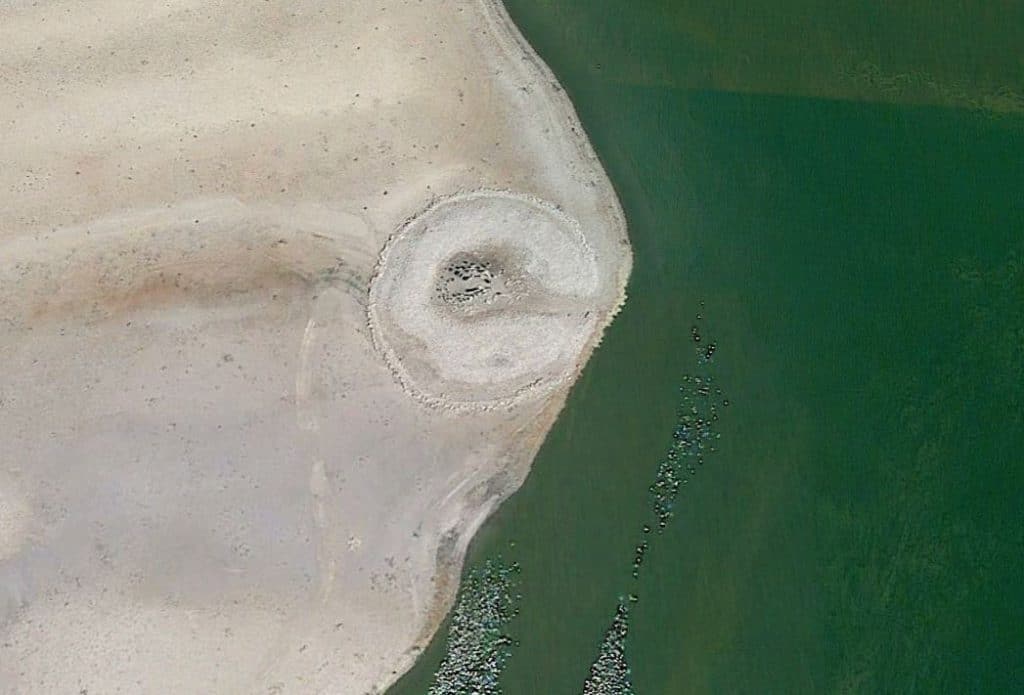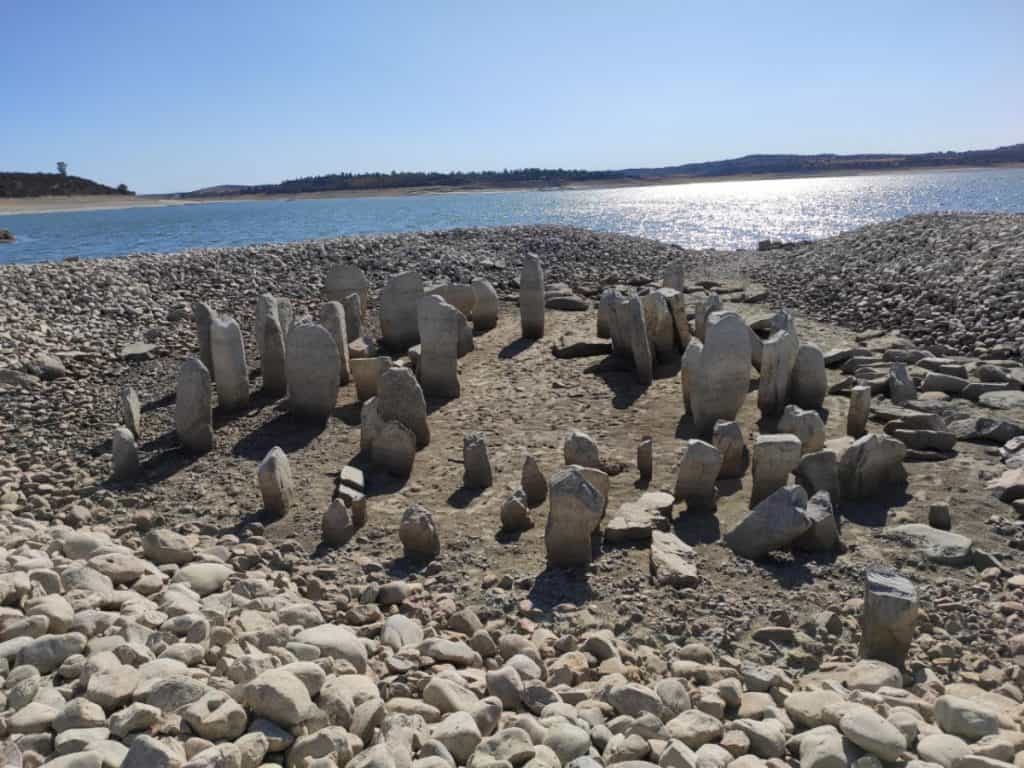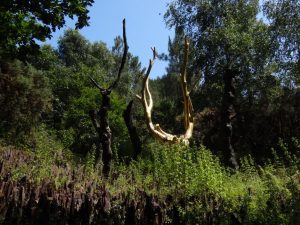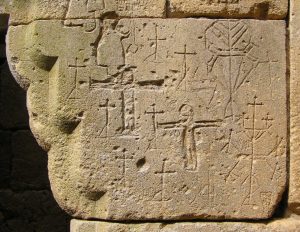(August 2022) One of the most significant megalithic structures in Extremadura is submerged in the Valdecaas reservoir, where it can only be viewed in years of intense drought. This was the case in 2019 and 2022.
What is the Stonehenge of Guadalperal?
The Stonehenge of Guadalperal is a 7,000-year-old megalithic structure consisting of approximately 100 standing stones, some as tall as six feet, set around an oval-shaped clearing. It is located near Peraleda de la Mata, a village in the Campo Arauelo region of eastern Extremadura, Spain. The monument is only visible when the water level in the Tagus River’s Valdecañas reservoir permits it.
The monument was discovered in 1926, between 1925 and 1927, during a research and excavation expedition directed by the German archaeologist Hugo Obermaier.
The discoveries of Hugo Obermaier
During one of the seasons Obermaier spent in Guadalperal, he began excavating the site, although the large size of it forced him to split the work in order to reach the foundations of the burial mound.
After Obermaier’s death, his unpublished works were rescued by the German archaeologists Georg and Vera Leisner, a married couple who are specialized in megaliths. They were responsible for organizing his legacy. Most of Obermaier’s materials are stored at the University of Freiburg.

The structure of Guadalperal
The structure of Guadalperal is characterized as a massive tomb covered by a burial mound. It was built with granite slabs that had to be carried to this location from 5 kilometers distance. Roughly 140 stones, some weighing more than two tons, are still standing.
The main ‘chamber’ has an oval shape and a diameter of 5 meters at its widest point. It was originally comprised of 13 stone plates, of which four are missing. The ‘corridor’ is between 1.30m and 1.40m wide and about 2 meters long. It is surrounded by a large circle.
Regarding the tomb covering, there are numerous viewpoints.
On one hand, Obermainer believed that it was never covered, whilst the Leisners propose a ceiling, similar to the “tholos” of the Almeria culture. The roofs of these tombs have the shape of a beehive.
Tholos grave
Obermaier never mentioned that roof stones were discovered inside the chamber since the upper portion had been looted and removed in the Roman times.
The Romans left behind a coin, several ceramic fragments, a grinding stone, a dump containing 11 axes and several flint knives.
The remainder of the material was extracted in several excavations, culminating in 1927 when the burial mound was completely excavated and its boulders transported a few meters away from their original location.
The archeological site contained bodies, buried along with valuable grave goods, but there were also traces of the sepulcher builders’ camp. These finds made the site extremely interesting.
Obermaier tells us that there were fireplaces. He also found patches of coal and ashes, pottery, mills, stones to sharpen axes, pellets of clay, arrowheads, etc. This indicates the builders resided in the area of the tomb.
The menhir of Guadalperal
A fascinating discovery associated with the dolmen is the presence of a menhir in the axis of the room, decorated with lines and dots. Some believe one of the lines represents the river Tagus. Most scientists say it is a picture of a snake.
The dolmens’ inventory is exceptional due to the range of artefacts that illustrate the nature of the burial and its consistency over time.
First, the Neolithic influence (about 300 B.C.) is evident by the quantity of microlithic tools, such as trapezoids, circle segments, etc. But there are also materials from the Copper Age (3500-2300 BC), such as vases, bowls, flint arrowheads, knives and even some copper artifacts.
The most impressive bell-shaped pottery in the area was placed in the tomb around 1500 BC, when the last burials took place. This pottery was ornamented with cuts that created geometric patterns in the so-called Bell Breakers’ style.
The flooding of the Dolmen of Guadalperal
The Dolmen of Guadalperal was flooded in 1963 as a result of a dam built by Francisco Franco’s administration as part of its efforts to modernize Spain.
During the construction of the Valdecañas reservoir, not enough precautions were taken to place this unique monument in a secure location, despite the fact that its discovery had been widely publicized in the Spanish scientific community at the time.
Given the chance, it deserves to be rescued and moved to a place where it can be viewed and appreciated. Until than you’ll have to wait for the next hot and dry summer to visit this site.











